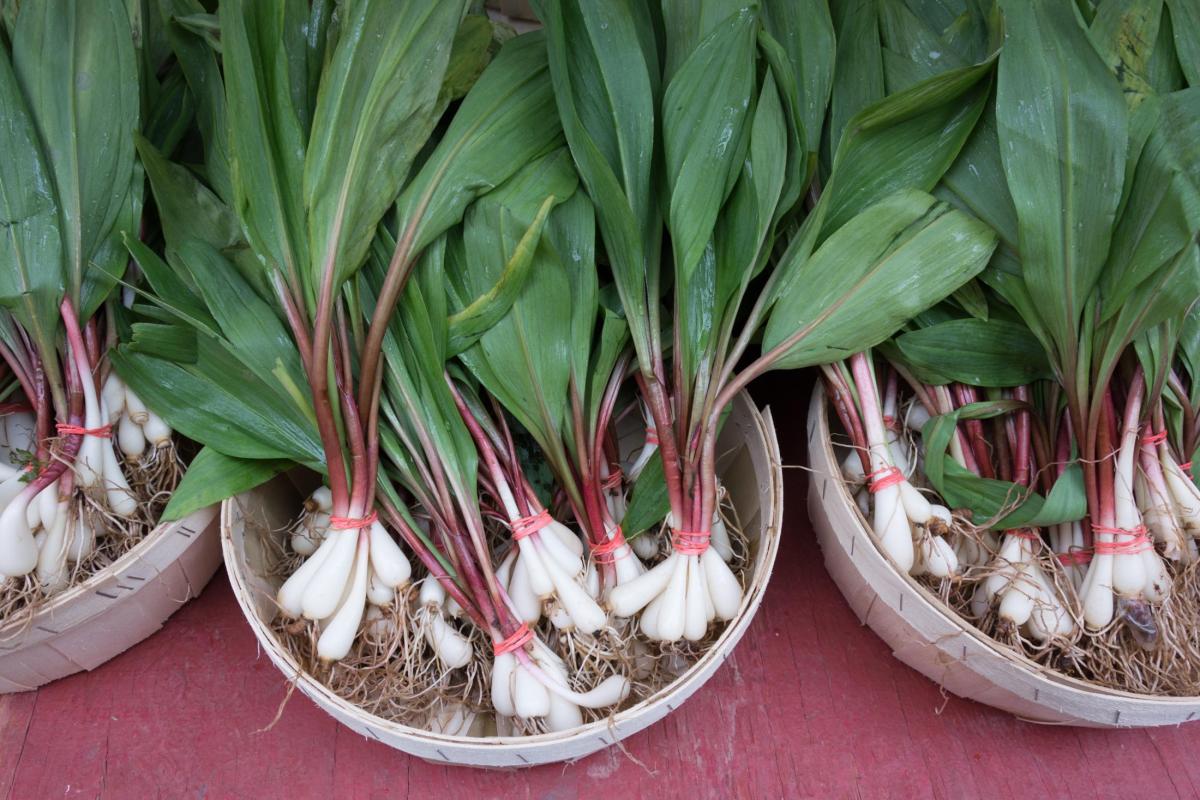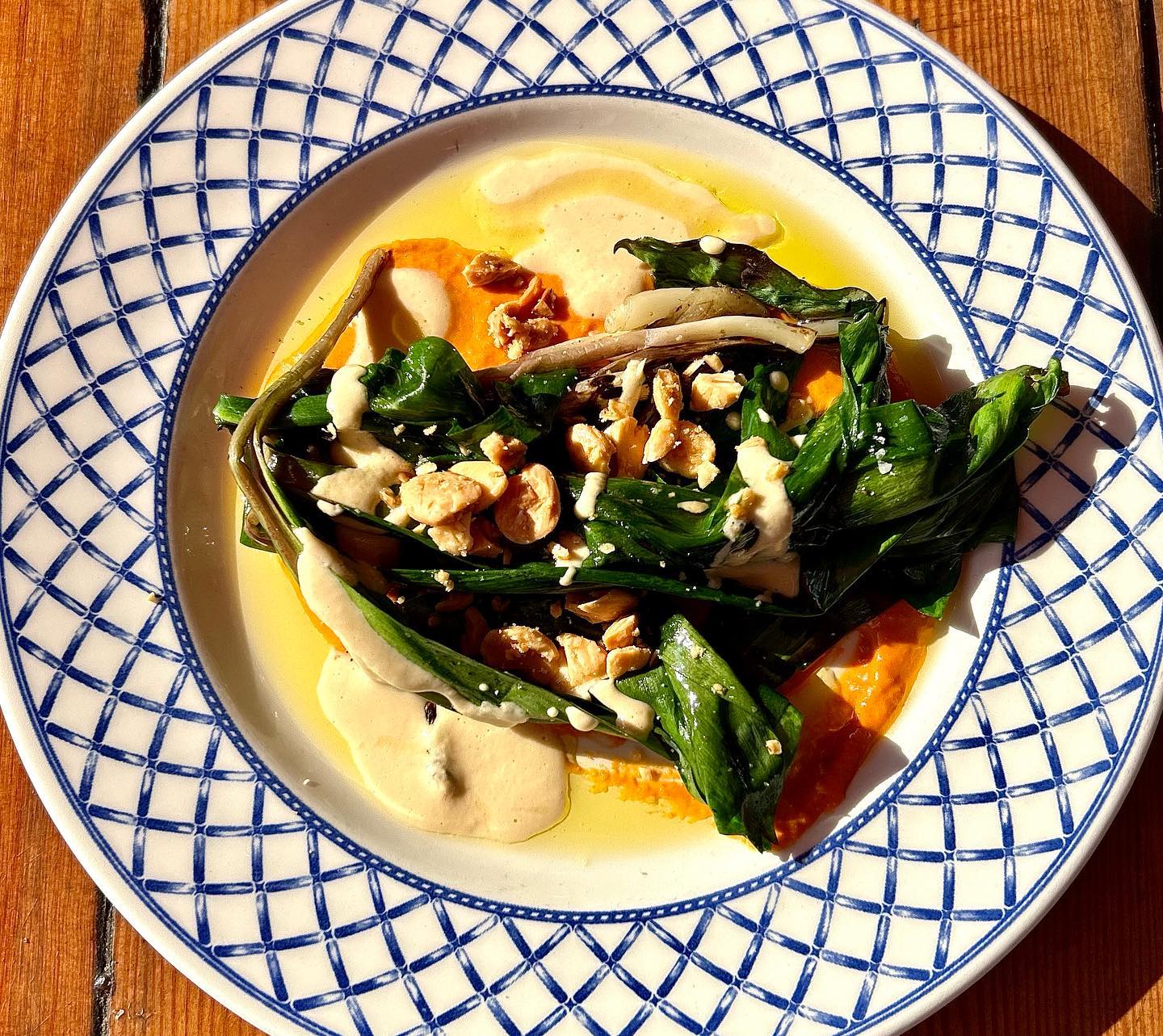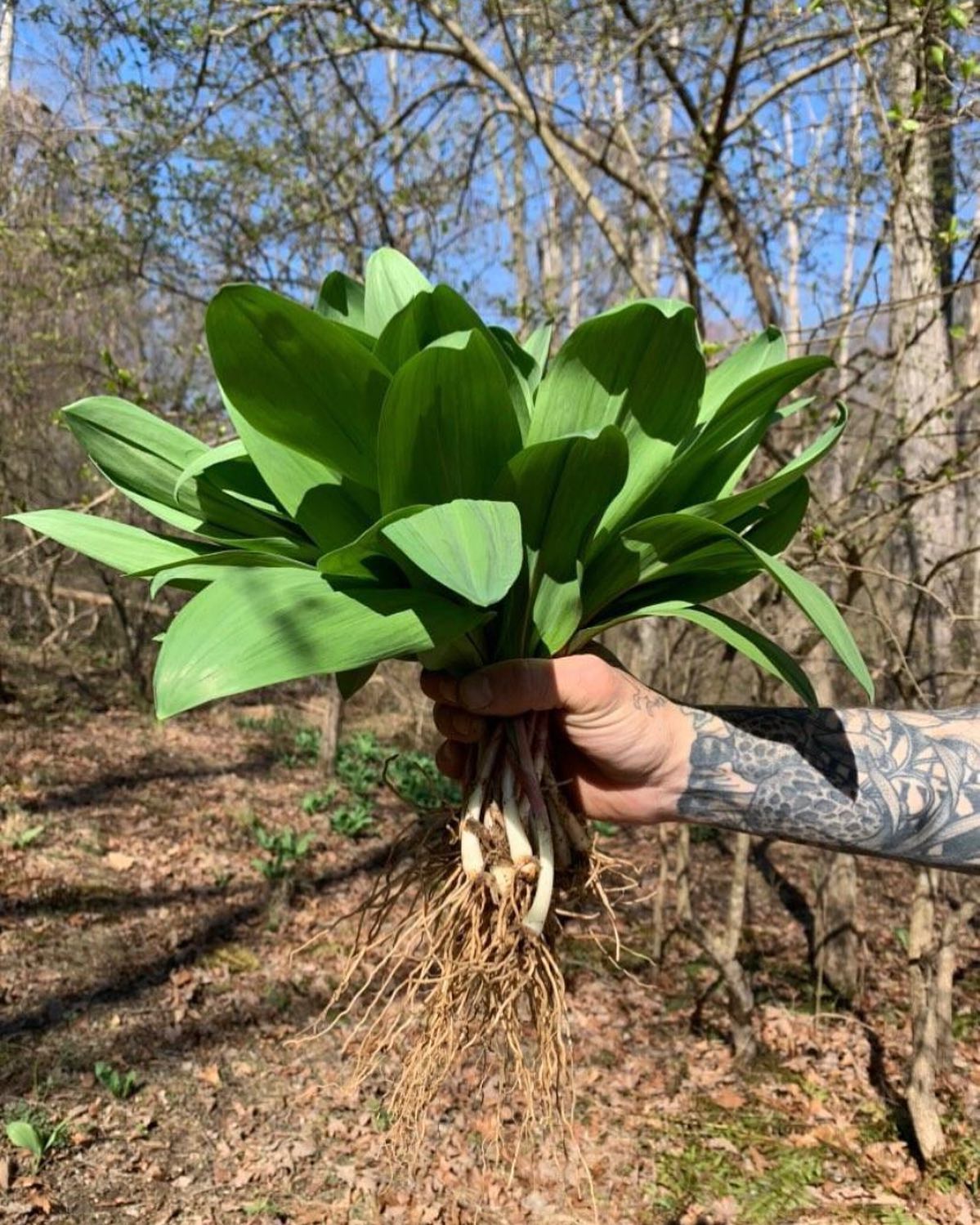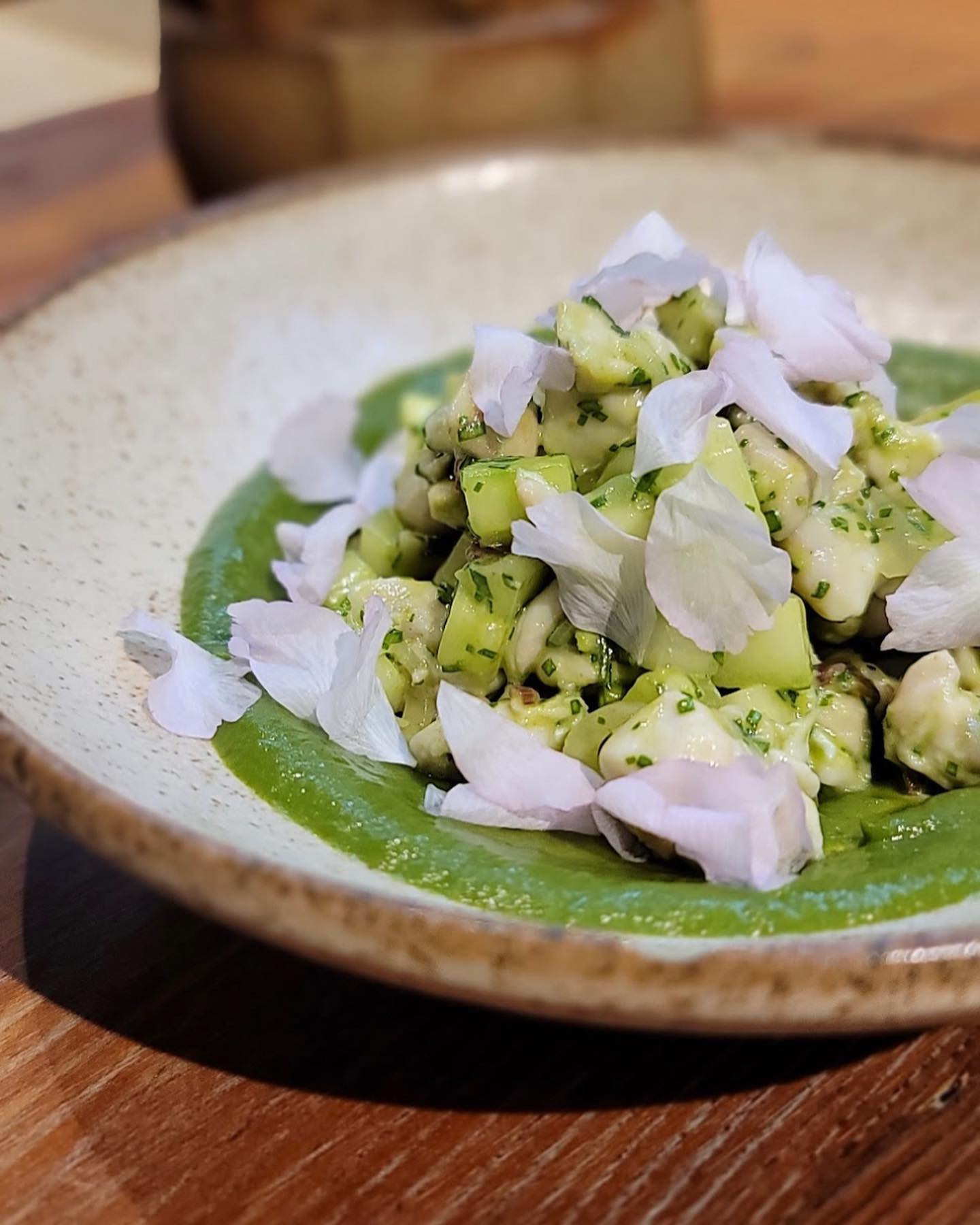
Around the start of April, you’ll find them growing all throughout the Appalachian region’s dense and dampened wooded areas, but only for a month or two. It’s during this fleeting window that the lanky, leafy ramp—a species of wild onion sometimes referred to as a wild leek—is quickly bundled up by foragers, farmers, and chefs.
“It’s like this essence of delayed gratification,” says chef John Shields, the Chesapeake food expert behind Gertrude’s Chesapeake Kitchen at the Baltimore Museum of Art—where he uses ramps in everything from a blended pesto to a ramp butter drizzled atop soft shell crabs throughout the season. “You know you’re only going to get ramps for a short window of time, so let’s love the hell out of ‘em.”
By the looks of recent dishes—such as Shields’ take on a spring pea soup with sautéed ramps and blanched asparagus tips—Charm City chefs are taking advantage while they can.
At Basque-inspired restaurant La Cuchara in Woodberry, chef/owner Ben Lefenfeld serves wood-grilled ramps and saffron-pickled ramp bulbs with fried soft shell crabs starting at the very beginning of the season. Currently, he’s serving pickled ramp bulbs with crispy oyster, blistered shishito chilis, and pimento aioli.

“We like to serve them really simply, because the flavor is so delicate,” Lefenfeld says. “The bottom of the ramp will taste a little bit more garlicky, whereas the top has more of an onion flavor to it.”
Throughout the season, Lefenfeld even separates the leaves to flavor everything from Spanish-style piccata to talos (Spanish flatbreads made with corn, flour, and water) stuffed with wood-grilled ramps, pea puree, and manchego cheese. “The light, sweet corn flavor with a little bit of char, paired with the ramps is just delicious,” Lefenfeld says.
At Foraged in Station North, chef and master forager Chris Amendola does, “anything and everything with them,” including using them in purees and pasta sauces. (During a recent meal at Foraged, Shields was delighted by a dish of warm ramp butter on oysters and focaccia. “I went crazy for it,” he says.) To round out the season, Amendola is currently offering a cucumber salad with black fermented ramp buttermilk dressing.


Versatile and tasty as they are, slow growth and high demand for ramps could mean they face early extinction, or, at least, widespread depletion if not harvested sustainably.
In a study published last month, experts from West Virginia University advised against the widespread overharvesting of ramps, sharing that local and commercial sales amount to $15 million in the first weeks of the season each year.
Additionally, Melissa Marra of WVU’s School of Agriculture and Foods estimated that in areas where 25 percent of ramps are taken from their patches by the root, regrowth can take upwards of 20 years. For this reason, agricultural professors also suggested that those who forage ramps take the greens, but leave the bulbs so that the roots can grow again.
Although, as Shields reinforces, these concerns are far less worrisome near greater Baltimore—away from dewy mountain climates—local chefs still take preservation measures seriously.
For Amendola’s part, he has been sourcing his own ramps and relocating them in wooded parts of Baltimore’s surrounding counties for nearly eight years. Since involving the public a couple years back, Amendola says his team has dispersed around 160 ramp transplants so far.
As a forager and a chef, he says that ramps are, “a special plant that holds a dear place in my heart…they’re one of the very first plants that come up every year that we can forage for,” which is why he hopes to continue this process for future generations.
“We’re looking to keep doing this until one day, we get back to a time when ramps are prevalent in Maryland,” he says.
